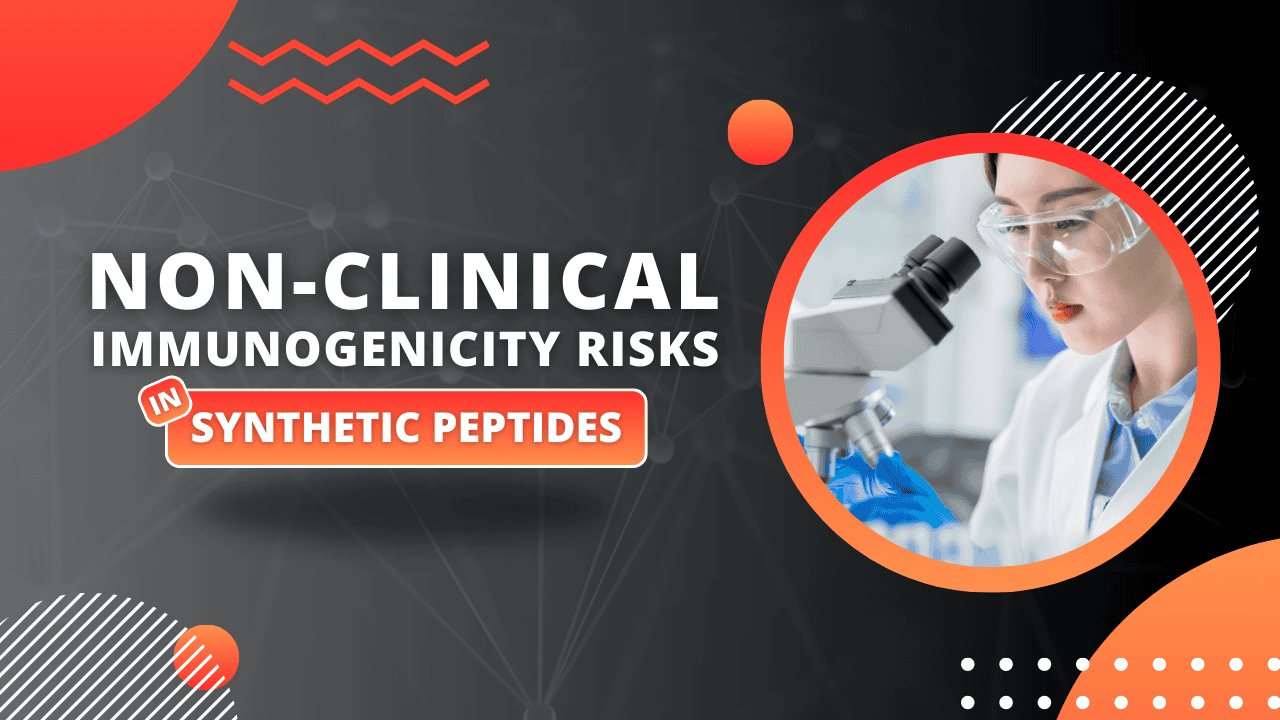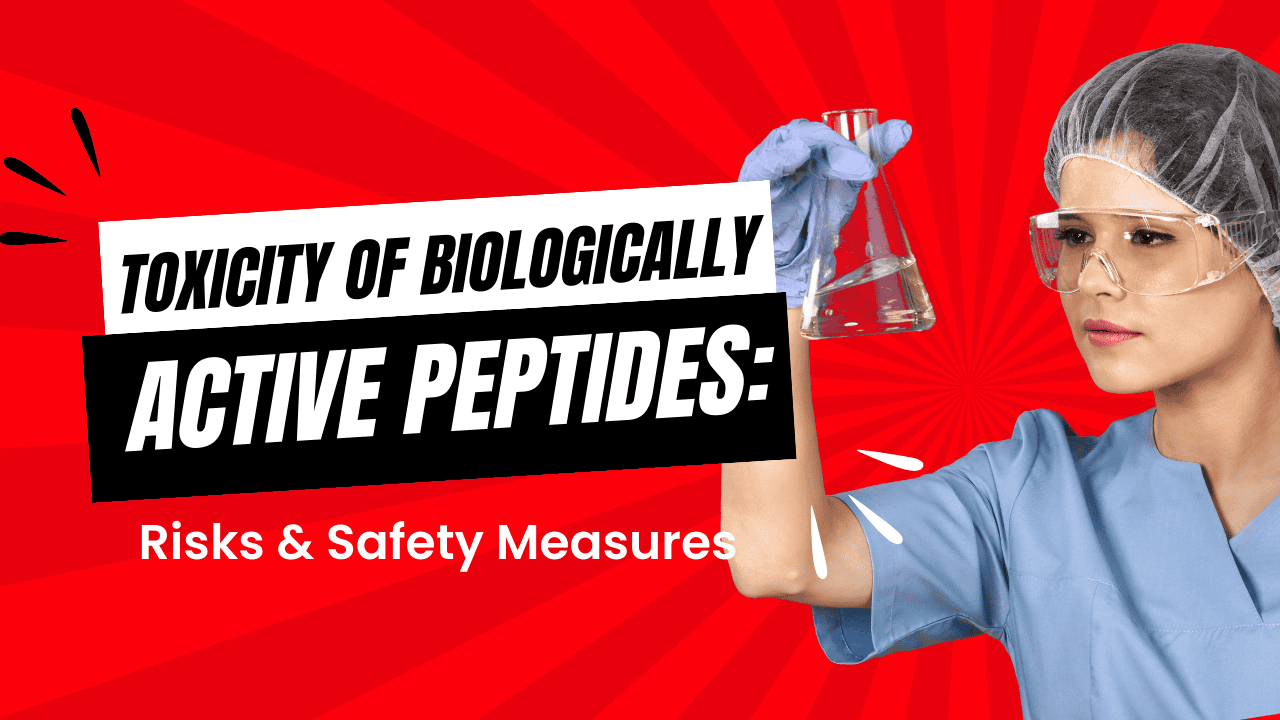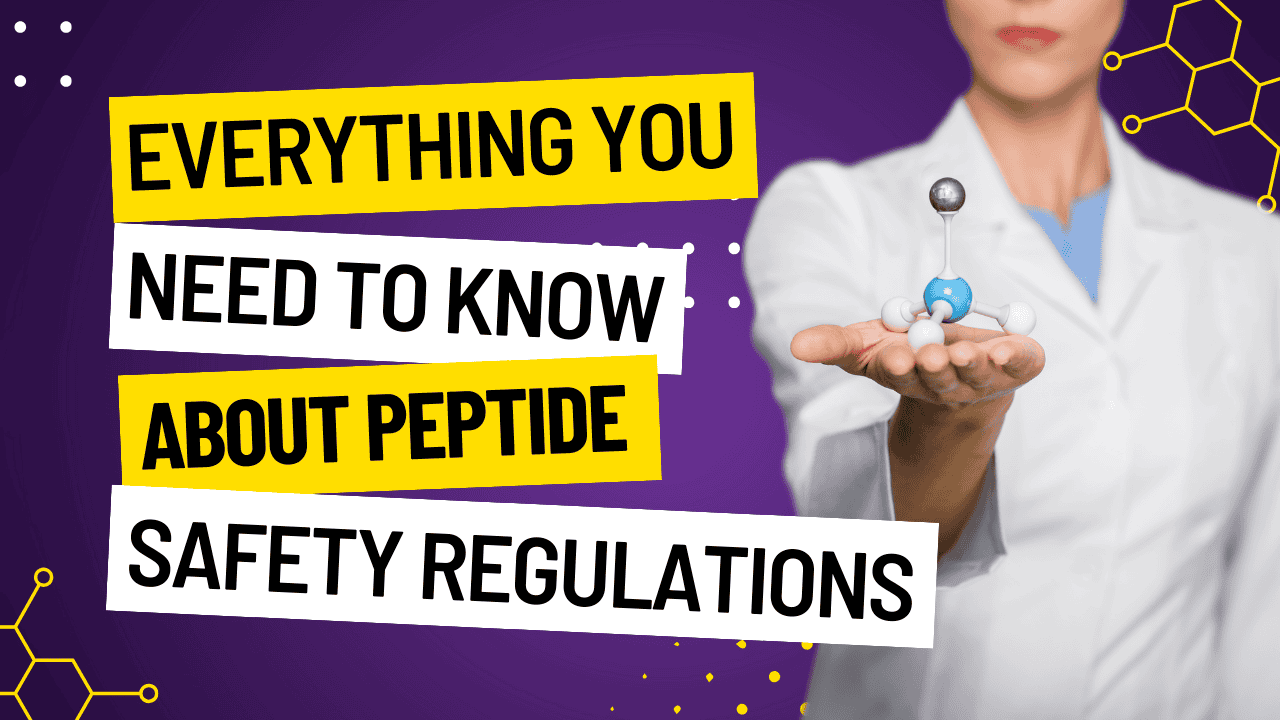

The FDA’s draft guidance on clinical pharmacology considerations for peptide drug products is critical for navigating the regulatory landscape of peptide therapeutics.
Understanding this guidance and the associated considerations ensures that peptide drugs developed meet stringent safety, efficacy, and quality standards.
The FDA’s draft guidance is designed to assist industry in the development of peptide drug products by offering clear recommendations and regulatory standards, aimed at optimizing the safety and efficacy of these therapeutics.
The guidance provides a framework for the development of peptide drug products, helping developers understand the necessary clinical pharmacology considerations and ensuring the peptide drugs meet required quality attributes.
Core elements include recommendations on peptide characterization, impurity management, immunogenicity assessment, and clinical pharmacology considerations, ensuring well-rounded peptide therapeutic development.
FDA guidance is crucial because it outlines the regulatory frame within which the clinical pharmacology of peptide drugs is evaluated, ensuring that approved peptide therapeutics are both safe and effective.
Clinical pharmacology evaluates how peptide drugs interact with the body, focusing on absorption, distribution, metabolism, and excretion to optimize therapeutic efficacy and safety.
By understanding the pharmacokinetics and pharmacodynamics of peptide drugs, clinical pharmacology helps fine-tune dosing, enhancing therapeutic outcomes while minimizing adverse effects.
Challenges include the complex structure of peptides, their sensitivity to enzymatic degradation, variability in bioavailability, and potential immunogenicity risks.
Optimization involves thorough pharmacokinetic profiling and assessment of drug-drug interactions, ensuring personalized therapy and maximizing therapeutic benefits for patients.
The FDA emphasizes the need for rigorous stability testing to ensure that peptide drug products maintain their efficacy and safety profile throughout their shelf life.
The FDA evaluates pharmacokinetics by assessing absorption rates, bioavailability, and how the peptide drug is metabolized and excreted, ensuring comprehensive pharmacological understanding.
Key safety parameters include toxicity, immunogenicity, and potential adverse effects, with an emphasis on detailed pharmacovigilance to protect patient health.
The FDA assesses immunogenicity by evaluating the potential of peptide drugs to trigger immune responses, which is critical to ensuring long-term safety and efficacy.
Bioavailability determines the degree and rate at which a peptide drug product is absorbed and becomes available at the site of action, directly impacting its therapeutic efficacy.
Peptide drugs are developed through a series of stages including discovery, synthesis, preclinical testing, clinical trials, and regulatory approval, each stage ensuring the peptide meets quality and safety standards.
Key stages include target identification, peptide synthesis, preclinical testing, and phased clinical trials, culminating in regulatory review and approval.
Regulatory pathways include the New Drug Application (NDA) process for innovative therapies, and Abbreviated New Drug Applications (ANDAs) for generic peptide drugs.
Methods such as recombinant DNA technology and solid-phase peptide synthesis are utilized to enhance peptide drug development, ensuring high purity and efficacy.
Synthetic peptide development allows for precise control over amino acid sequences, whereas natural peptide extraction depends on isolating peptides from biological sources, which can be variable.
Common impurities include incomplete peptide fragments, residual solvents from synthesis, and degradation products that can affect the drug’s safety and efficacy.
The FDA categorizes impurities based on their origin, toxicity, and potential to impact the peptide drug product’s quality, setting strict limits and requiring thorough testing.
Identifying impurities is vital to ensure the safety, efficacy, and quality of peptide drugs, preventing harmful effects and maintaining therapeutic integrity.
Impurities can cause adverse reactions, reduce therapeutic activity, and affect the stability of peptide drug products, potentially leading to ineffective or harmful treatments.
Techniques such as high-performance liquid chromatography (HPLC) and mass spectrometry are employed to accurately detect and quantify peptide impurities.
Industry strategies include optimizing synthesis processes, rigorous purification techniques, and thorough testing for impurity profiles to ensure high-quality peptide drugs.
Regulatory guidelines, such as those from the FDA, provide clear standards and procedures for identifying, quantifying, and managing impurities in peptide drugs.
The United States Pharmacopeia (USP) sets reference standards and monographs for peptides, ensuring consistent quality and impurity control across peptide drug products.
Impurities are monitored through continuous analytical testing during all stages of development, from initial synthesis to final product testing, ensuring compliance with regulatory standards.
Yes, impurities can significantly compromise the quality by affecting the stability, safety, and efficacy of peptide drugs, highlighting the need for stringent impurity management.
Peptide manufacturing can generate waste and consume significant resources, posing environmental challenges that must be addressed through sustainable practices.
FDA guidelines encourage the adoption of green chemistry and sustainable manufacturing processes to minimize the environmental impact of peptide production.
Practices such as recycling solvents, using biodegradable materials, and optimizing process efficiency are employed to reduce the environmental footprint of peptide synthesis.
Yes, the FDA supports and approves sustainable practices that comply with regulatory standards, fostering environmentally responsible peptide manufacturing.
Effective impurity management reduces waste generation and environmental contamination, aligning with broader environmental safety goals in peptide manufacturing.
USP peptide standards provide reference materials and specifications that ensure the quality, purity, and identity of peptide drug products.
By setting stringent benchmarks for purity, potency, and safety, USP standards help maintain consistent quality and reliability in peptide drug products.
USP standards complement FDA guidelines by providing detailed reference standards that support regulatory compliance and high-quality peptide therapeutic development.
USP standards are periodically reviewed and updated to incorporate new scientific insights and regulatory requirements, ensuring they remain current and relevant.
Compliance with USP standards enhances the credibility and marketability of peptide drug products, ensuring they meet recognized quality benchmarks and regulatory expectations.
Techniques such as mass spectrometry, nuclear magnetic resonance (NMR), and peptide mapping are critical for detailed peptide characterization and impurity analysis.
Mass spectrometry provides precise molecular weight determination and structural analysis, essential for identifying peptide impurities and verifying peptide identity.
High-performance liquid chromatography (HPLC) is pivotal in separating, identifying, and quantifying impurities in peptide drugs, ensuring high purity levels.
Bioanalytical methods are validated through rigorous testing to ensure accuracy, precision, sensitivity, and reproducibility in detecting and quantifying peptide drug substances.
Innovations such as advanced chromatographic techniques, enhanced imaging, and real-time monitoring systems are revolutionizing the analytical evaluation of peptides, improving precision and efficiency.
Quality control is maintained through rigorous testing, adherence to Good Manufacturing Practices (GMP), and continuous monitoring of production processes to ensure consistency and compliance.
The FDA requires thorough documentation, validation of processes, and comprehensive testing to ensure that peptide drug products meet established quality standards.
GMP guidelines mandate that peptide drug production processes are well-documented, standardized, and controlled to maintain high quality and safety.
Key performance indicators include purity, potency, stability, and impurity levels, which are continuously assessed to ensure the peptide drug product meets all quality criteria.
Robust quality control ensures that peptide drug products remain stable and retain their therapeutic efficacy over their designated shelf life, providing reliable treatment options.
Specifications are set based on rigorous analytical testing, regulatory requirements, and industry standards, ensuring the peptide drug product meets all necessary criteria.
Analytical data such as impurity profiles, potency assays, and stability studies support the setting of specifications for peptide drug products, ensuring thorough quality assessment.
The FDA reviews peptide drug specifications through a detailed evaluation of the submitted data, ensuring that the drug product meets all safety and quality requirements.
Factors include the intended use of the peptide drug, its pharmacokinetics, impurity profiles, and regulatory guidelines, all contributing to the final specifications.
Specifications are validated through repeated testing and verification across multiple batches, ensuring consistency and compliance with established standards.
The FDA’s regulatory requirements encompass detailed guidelines on impurity profiling, clinical pharmacology, stability testing, and documentation to ensure peptide drug products meet all safety and efficacy criteria.
Compliance is defined by adherence to regulatory guidelines, thorough documentation, and consistent quality control practices that ensure peptide drug products meet established standards.
Documentation includes comprehensive data on peptide characterization, clinical trials, safety assessments, impurity profiles, and manufacturing processes, all submitted for regulatory review.
Regulatory audits involve detailed inspections of manufacturing facilities, processes, and documentation to verify that peptide drug production adheres to GMP and FDA guidelines.
Common challenges include meeting stringent impurity limits, demonstrating bioequivalence for generic peptides, and ensuring long-term stability and safety of peptide drug products.
The future landscape is promising, with ongoing advancements in peptide synthesis technology, innovative therapeutic applications, and enhanced regulatory frameworks supporting the growth of peptide therapeutics.
Emerging technologies such as automated peptide synthesizers, advanced analytical tools, and biotechnological innovations are poised to streamline production, enhance quality, and lower costs.
Breakthroughs include novel delivery systems, multifunctional peptides with diverse therapeutic activities, and personalized peptide therapies tailored to individual patient needs.
Industry trends such as increased investment in biotechnology, collaboration between academic and commercial entities, and a focus on precision medicine are driving the evolution of peptide drug development.
Long-term benefits include ensuring the safety and efficacy of peptide drugs, fostering innovation, and providing clear regulatory pathways that facilitate the development and approval of high-quality peptide therapeutics.
Key Takeaways:
Yes, peptides are regulated by the Food and Drug Administration (FDA). The FDA’s draft guidance provides recommendations for ensuring the safety, efficacy, and quality of peptide drug products.
Peptides are legal in the US if they meet the regulatory standards set by the US Food and Drug Administration. They must comply with specific acceptance criteria to ensure they are safe for therapeutic use.
No, BPC 157 is not FDA approved. It has not yet met the stringent regulatory considerations for peptide therapeutics, including required clinical trials and safety evaluations.
The biggest limitation of peptide-based drugs is their stability and susceptibility to enzymatic degradation. This impacts their bioavailability and therapeutic efficacy, posing significant challenges in drug development and product development.
BPC 157 is not FDA approved because it does not yet meet the extensive regulatory requirements, including comprehensive clinical research and evaluations mandated by the Food and Drug Administration for therapeutic peptide approval.
The safety of BPC 157 is not fully established due to the lack of FDA approval. Without rigorous testing and evaluation, its safety profile remains uncertain, underscoring the importance of adhering to FDA guidance.
Yes, several peptides are FDA approved. These peptides have undergone thorough clinical pharmacology assessments and adhere to the FDA’s stringent control strategy and acceptance criteria for therapeutic peptide products.
The FDA has not banned peptides universally. However, certain peptides may be restricted or banned if they do not meet the federal food, drug, and cosmetic act regulations or pose health risks due to unsafe usage or manufacturing practices.
As of now, numerous peptides have received FDA approval. These peptides have met the FDA’s necessary regulatory considerations and quality control standards in their development programs.
Peptides can be classified as either drugs or biologics, depending on their source and method of manufacture. Synthetic peptides are considered drugs, while those derived from biological sources may fall under the category of biologics as outlined by the FDA.
Dr. Richard DiMarchi is a preeminent figure in the peptide research community, known for his groundbreaking work in peptide drug discovery and development. With a career spanning over three decades, Dr. DiMarchi’s contributions have fundamentally shaped the understanding and therapeutic application of peptides. He has been instrumental in the development of several approved peptide drugs, showcasing his unparalleled expertise in both the scientific and regulatory aspects of the field.
Dr. DiMarchi’s notable publications include:
Dr. DiMarchi’s pioneering work has been recognized with numerous awards, including the prestigious Peptide Therapeutics Foundation Award. His research embodies both innovation and rigorous methodology, contributing significantly to the field’s body of knowledge on peptide-based therapeutics.
Dr. Jean Martinez is a distinguished researcher specializing in peptide and peptidomimetic science. His extensive work in solid-phase peptide synthesis and peptide-based drug design has earned him wide acclaim in the scientific community. With his in-depth expertise, Dr. Martinez has substantially advanced the development of therapeutic peptides, particularly in the treatment of diseases like cancer and metabolic disorders.
Key publications by Dr. Martinez include:
Dr. Martinez’s contributions are characterized by their innovative approaches and application of cutting-edge techniques in peptide synthesis and modification. He has been honored with the European Peptide Society’s lifetime achievement award, underscoring his authority and trusted expertise in the field of peptide research. His commitment to advancing the quality of synthetic peptides ensures that his work remains at the forefront of the industry’s evolving landscape.
Awuah, W. A., Shah, M. H., Tan, J. K., Ranganathan, S., Sanker, V., Darko, K., Tenkorang, P. O., Adageba, B. B., Ahluwalia, A., Shet, V., Aderinto, N., Kundu, M., Abdul‐Rahman, T., & Atallah, O. (2024). Immunotherapeutic advances in glioma management: The rise of vaccine‐based approaches. CNS Neuroscience & Therapeutics, 30(9). https://doi.org/10.1111/cns.70013
Graham, K., Stack, H., & Rea, R. (2020). Safety, beneficial and technological properties of enterococci for use in functional food applications – a review. Critical Reviews in Food Science and Nutrition, 60(22), 3836–3861. https://doi.org/10.1080/10408398.2019.1709800
Heinemann, L., Khatami, H., McKinnon, R., & Home, P. (2015). An overview of current regulatory requirements for approval of biosimilar insulins. Diabetes Technology & Therapeutics, 17(7), 510–526. https://doi.org/10.1089/dia.2014.0362
Hirtz, C., Bros, P., Brede, C., Lescuyer, P., Maceski, A. M., Vialaret, J., Delatour, V., & Lehmann, S. (2018). Regulatory context and validation of assays for clinical mass spectrometry proteomics (cMSP) methods. Critical Reviews in Clinical Laboratory Sciences, 55(5), 346–358. https://doi.org/10.1080/10408363.2018.1470159
Honigberg, M. C., Chang, L., McGuire, D. K., Plutzky, J., Aroda, V. R., & Vaduganathan, M. (2020). Use of Glucagon-Like peptide-1 receptor agonists in patients with Type 2 diabetes and cardiovascular disease. JAMA Cardiology, 5(10), 1182. https://doi.org/10.1001/jamacardio.2020.1966
Khan, M. S., Fonarow, G. C., McGuire, D. K., Hernandez, A. F., Vaduganathan, M., Rosenstock, J., Handelsman, Y., Verma, S., Anker, S. D., McMurray, J. J., Kosiborod, M. N., & Butler, J. (2020). Glucagon-Like peptide 1 receptor agonists and heart failure. Circulation, 142(12), 1205–1218. https://doi.org/10.1161/circulationaha.120.045888
Morris, V. K., Kennedy, E. B., Baxter, N. N., Benson, A. B., Cercek, A., Cho, M., Ciombor, K. K., Cremolini, C., Davis, A., Deming, D. A., Fakih, M. G., Gholami, S., Hong, T. S., Jaiyesimi, I., Klute, K., Lieu, C., Sanoff, H., Strickler, J. H., White, S., . . . Eng, C. (2022). Treatment of Metastatic Colorectal Cancer: ASCO Guideline. Journal of Clinical Oncology, 41(3), 678–700. https://doi.org/10.1200/jco.22.01690
Säll, C., Argikar, U., Fonseca, K., Hilgendorf, C., Lopes, F., Riedel, J., Schiller, H., Sonesson, A., Umehara, K., & Wang, K. (2023). Industry Perspective on Therapeutic Peptide Drug–Drug Interaction Assessments During Drug Development: A European Federation of Pharmaceutical Industries and Associations White Paper. Clinical Pharmacology & Therapeutics, 113(6), 1199–1216. https://doi.org/10.1002/cpt.2847
Zane, D., Feldman, P. L., Sawyer, T., Sobol, Z., & Hawes, J. (2020). Development and regulatory challenges for peptide therapeutics. International Journal of Toxicology, 40(2), 108–124. https://doi.org/10.1177/1091581820977846
ALL ARTICLES AND PRODUCT INFORMATION PROVIDED ON THIS WEBSITE ARE FOR INFORMATIONAL AND EDUCATIONAL PURPOSES ONLY. The products offered on this website are intended solely for research and laboratory use. These products are not intended for human or animal consumption. They are not medicines or drugs and have not been evaluated or approved by the FDA to diagnose, treat, cure, or prevent any disease or medical condition. Any form of bodily introduction is strictly prohibited by law.




Discount Applied Successfully!
Your savings have been added to the cart.